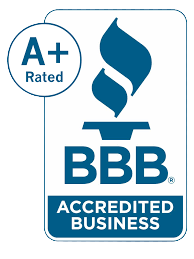
What is Roof Insulation?
Roof insulation refers to the materials and methods used to insulate a building’s roof, providing thermal resistance and improving energy efficiency. This is crucial for maintaining comfortable indoor temperatures, reducing heat transfer, and preventing energy loss.
Why is Roof Insulation Important?
Roof insulation offers several key benefits that are vital for both the comfort of your space and the efficiency of your energy usage.
1. Energy Efficiency
Roof insulation helps to reduce heat transfer between your building’s interior and the outside. It acts as a thermal barrier, preventing heat loss during the winter and heat gain during the summer. This results in less reliance on heating and cooling systems, stabilizing indoor temperatures and lowering overall energy consumption.
2. Comfortable Indoor Environment
Good roof insulation ensures consistent indoor temperatures, creating a more comfortable living or working space. It minimizes temperature fluctuations and reduces the need for constant heating or cooling, which leads to better comfort for the occupants.
3. Condensation Control
Proper insulation prevents moisture buildup in the roof structure. By keeping warm air from coming into contact with cold surfaces, it reduces the chance of condensation. This is essential for preventing issues like mold growth, material damage, and structural problems.
4. Soundproofing
Roof insulation also provides soundproofing benefits. It reduces the amount of external noise, such as rain, wind, and traffic, that enters the building, making your indoor environment quieter and more peaceful.
5. Environmental Impact
By reducing energy consumption, roof insulation helps lower your carbon footprint. It decreases the need for fossil fuels and minimizes greenhouse gas emissions, contributing to a more sustainable environment.
6. Increased Roof Longevity
A well-insulated roof can last longer. Insulation protects roofing materials from extreme temperature changes, preventing premature wear and damage caused by moisture or fluctuating conditions.
7. Regulatory Compliance
Many building codes and energy efficiency regulations now require sufficient roof insulation. Installing proper insulation ensures you meet legal standards and avoid penalties while ensuring a safer, more comfortable space for occupants.
Steps for Installing Roof Insulation
Proper installation is essential for maximizing the benefits of roof insulation. Here’s a general guide to the process:
1. Choose Insulation Material
Select the best insulation material based on your needs, budget, and local construction codes. Options include fiberglass batts, spray foam, rigid foam boards, and reflective barriers.
2. Install Vapor Barrier
A vapor barrier helps prevent moisture from entering the insulation layer. Follow manufacturer instructions to ensure it is properly sealed and installed.
3. Install Insulation
Cut the insulation material to fit between the roof structure elements like rafters or trusses. Make sure the insulation is tightly secured, minimizing gaps that could reduce its thermal effectiveness.
4. Seal Air Leaks
Inspect for any gaps or air leaks and seal them with appropriate materials, such as foam sealants. This helps maintain insulation performance and prevents heat loss.
5. Ensure Proper Ventilation
Proper ventilation is key to maintaining the insulation’s effectiveness. Ensure sufficient airflow to prevent condensation and preserve the insulating layer.
6. Inspect and Test
Once the insulation is installed, conduct thorough checks to ensure it is correctly aligned and performing well. Thermal imaging scans or moisture tests can help identify any issues.
Common Roof Insulation Issues and Solutions
1. Inadequate Insulation
If your roof insulation is not sufficient, you may experience heat loss and higher energy costs. Solution: A professional contractor can assess your current insulation and suggest adding more to meet the necessary thermal requirements.
2. Thermal Bridging
Thermal bridging occurs when gaps in insulation allow heat to bypass the insulation layer, causing energy loss. Solution: A contractor can install continuous insulation and address any gaps around structural components.
3. Moisture Accumulation
Improper installation or lack of moisture barriers can lead to moisture buildup, leading to mold and deterioration. Solution: A contractor will ensure proper vapor barriers are installed and address any moisture issues.
4. Code Compliance
Failure to meet local insulation requirements can result in penalties. Solution: Make sure to work with a contractor who is up-to-date with building codes to ensure compliance.
How to Repair Roof Insulation
If your roof insulation is damaged, here’s how you can repair it:
1. Inspection and Assessment
Start by conducting a thorough inspection to identify areas of damage, moisture infiltration, or insufficient coverage.
2. Moisture Mitigation
Address any sources of moisture before repairing the insulation. Repair leaks and ensure that moisture barriers are in place.
3. Replace Damaged Insulation
Remove damaged insulation and replace it with new material that meets the required standards for thermal resistance.
4. Seal Gaps and Leaks
Inspect for any gaps in the insulation layer and seal them to prevent energy loss and ensure a continuous thermal barrier.
5. Quality Check
After completing the repairs, ensure the insulation is properly installed and that the roof is free from leaks or gaps.
Why Choose Anjco Roofing?
- Experience and Expertise: With extensive experience, Anjco Roofing can handle various roofing systems and challenges.
- Quality Workmanship: Our skilled technicians ensure high-quality installations and repairs with durable materials.
- Comprehensive Services: We offer a full range of commercial roofing services, from installation to repairs and maintenance.
- Customer Satisfaction: We prioritize clear communication and excellent service, ensuring that every project meets your expectations.
- Long-Term Relationships: We aim to be your trusted roofing partner for years to come, providing ongoing support and maintenance.
Frequently Asked Questions
Q. What does roof insulation do?
Roof insulation improves energy efficiency, maintains comfortable temperatures, controls moisture, reduces noise, and helps meet building codes.
Conclusion
Roof insulation is a critical element in the construction and maintenance of commercial buildings. It helps to save energy, enhance comfort, and increase the longevity of your roofing system. By investing in high-quality insulation, you can create a more sustainable, comfortable, and efficient building that will benefit you for years to come.


